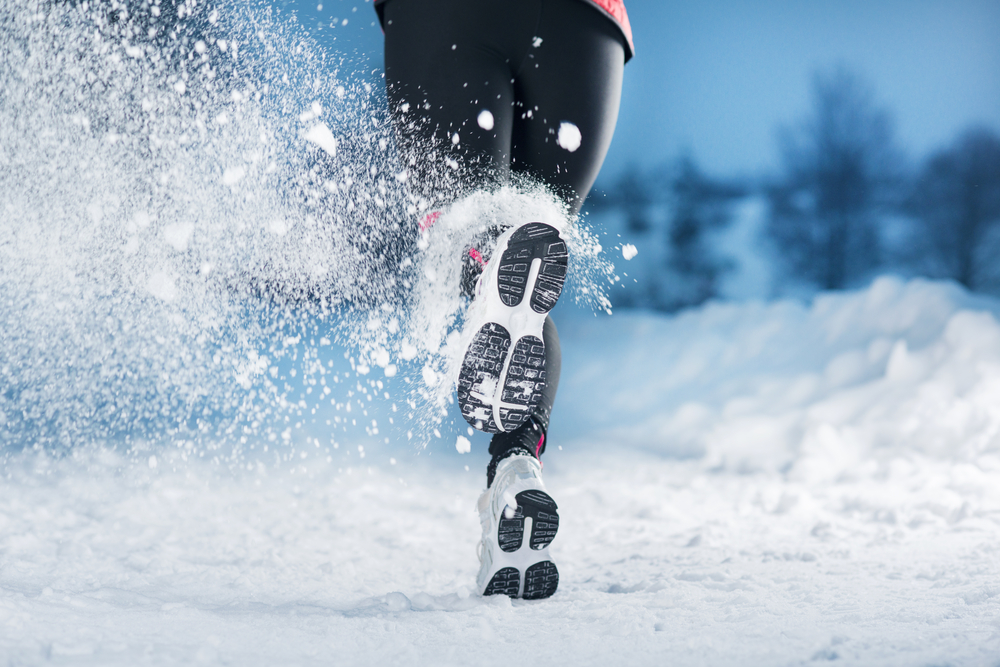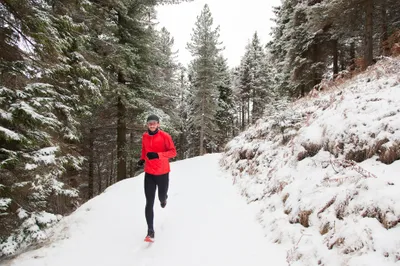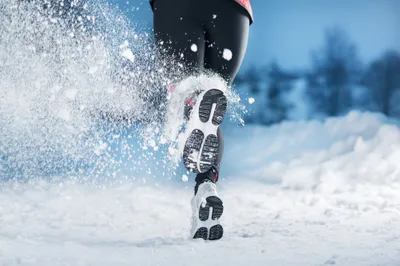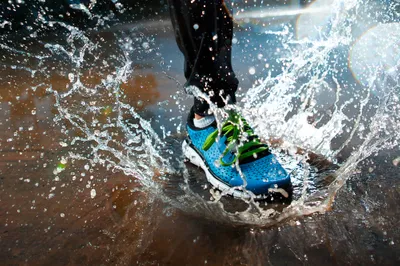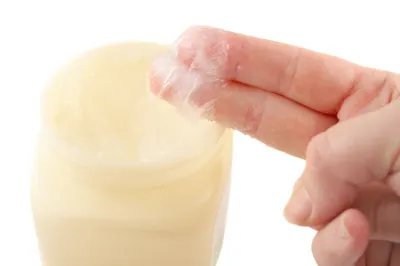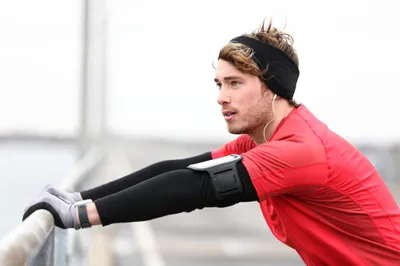Just because the days are shorter, darker, and colder doesn’t mean your sneakers need to seek a warm place to hibernate in the back of your closet until springtime.
No, foul weather running is actually beneficial as far as boosting mood and energy levels in winter months—as long as you do it with safety in mind. Here are ten tips for foul weather running…
1. Layer Up
First and foremost, ensure you’re shielded from wind and snow because if you’re clothing gets wet it’s not only uncomfortable, but also painful (if it causes chaffing), and dangerous (if it causes frostbite). So layer up like so:
- Start with a thin layer of wicking material to keep sweat off your skin.
- Mid-layer with warm polar fleece for added insulation.
- Shield with an outer layer of breathable nylon or Gore-Tex to protect you from wind, sleet, and snow.
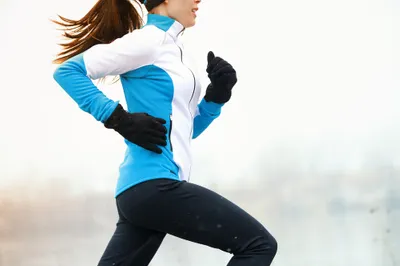
2. Dress To Prevent Chaffing
Running in colder conditions means you won’t heat up as much, but you’ll still sweat. So proactively dress to prevent uncomfortable chaffing due to the friction of moist skin rubbing against clothing. Wear comfortable yet snug, non-cottons to let skin breath and dry to avoid painful blisters.
3. Prevent Slips and Falls
Running on wet roads, particularly on bridges, slippery sidewalks, or slick white lines painted on roads can increase your chances of a slip or fall. I use a cheap pair of ice guards that stretch to slip over my sneakers and grab the road with metal pins. I also avoid unmaintained roads and sidewalks on my winter running route.
4. Protect Against Hypothermia
Obviously running and sweating in freezing temperatures can make you prone to hypothermia—particularly after not during your runs when your body temperature plummets. So make the wise choice to drink a warm beverage and change into warm, dry clothes as soon as you get home.
5. Protect Wet, Frosty Toes
If you walk to warm up, or walk a distance to get to your route, protect your shoes from dampness (and your toes from getting wet) by covering them with plastic bags. Then simply tuck the bags into your pockets before you run.
6. Enlist Waterproofing Products
To prevent further chaffing and to essentially waterproof skin, arm prone areas with a thick layer of petroleum jelly to trap body heat in and prevent water from causing chafing against clothing.
7. Protect Extremities
Heat is most likely to escape through your exposed extremities. For example, approximately 35-percent of your body heat escapes through shielded hands and feet. So wear running gloves, mittens, and socks with wicking liners to retain heat. If you’re still chilly, slide disposable heat packets into your socks and gloves.
8. Begin Running Towards Wind
You’re probably thinking why would I want to warm up my run by running at the wind. However, when you consider that you’re sweating and cooling down at the end of your run, it makes sense to have the wind at your back so you don’t catch a nasty chill.
9. Protect Your Head
While you loose approximately 35-percent of heat through your hands and toes—you shed 40-percent of heat via your head. That’s why wearing a hat or headband, even if you eventually take it off, will protect you from heat loss and hypothermia.
10. Shield Your Face
If the wind is really biting cold, you’ll be prone to frostbite—especially on your nose and ears. Monitor your face for numbness, and wear a mask, headband, or a scarf that you can breathe through for added protection. As mentioned, you can always take it off.
